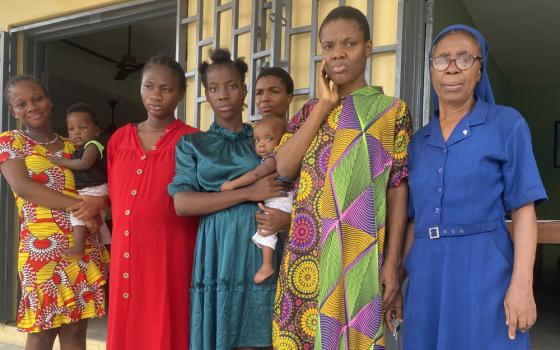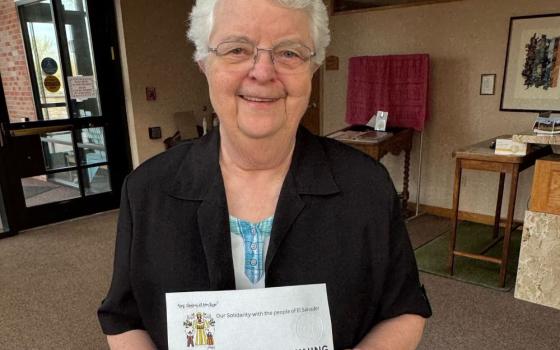ROME -- On Friday, lawyers for the victim in a Wisconsin sex abuse case voluntarily withdrew a lawsuit against the Vatican, which had also named Pope Benedict XVI and Cardinals Tarcisio Bertone, the Secretary of State, and Angelo Sodano, his predecessor, as defendants. The case helped ignite a media firestorm in 2010 about the role of Pope Benedict XVI in the sex abuse scandals, suggesting that while he was still a Vatican official he had delayed action against the late Fr. Lawrence Murphy, accused of molesting some 200 boys at a Milwaukee-area school for the deaf between 1950 and 1974.
See also: Explosive sex abuse lawsuit against Vatican dropped
The following is a statement released on Saturday by California-based attorney Jeffrey Lena, who represents the Vatican in American litigation.
* * *
Statement of Jeffrey S. Lena Regarding John Doe 16 v. Holy See, et al.
(Case No. 2:10-cv-00346 RTR, U.S. District Court, Eastern District of Wisconsin)
On February 10, 2012, Jeffrey R. Anderson, Esq. of the law office of Jeff Anderson and Associates, working together with columnist Marci Hamilton, Esq., filed a voluntary notice of dismissal in the case of John Doe 16 v. Holy See.
The Notice of Voluntary Dismissal -- which was filed by the Plaintiff’s lawyers to avoid their duty to submit to the Court a court-ordered response to the Holy See’s Motion to Dismiss -- requested that the “Court take notice of this dismissal and remove this matter from its docket.”
With these ignominious words, the John Doe 16 case died silently on a Friday afternoon in what attorney Jeff Anderson has himself called “the crucible of the courtroom.”
Things were different at the beginning of this case. On April 22, 2010, counsel for Plaintiff orchestrated a press event replete with props and other trappings designed to induce a media feeding frenzy. During the frenzy, Plaintiff’s counsel dramatically announced that they held information demonstrating a “world-wide conspiracy” related to sexual abuse that was directed by the Holy See. That outworn and discredited claim was in fact the centerpiece of a planned sequence of media events that took a very serious matter -- the sexual abuse of a child – and turned it into a tool to assert fallacious allegations of Holy See responsibility and liability for John Doe 16’s abuse.
As a point of illustration, the Plaintiff’s attorneys used allegations in the John Doe 16 case to foster the myth that Crimen sollicitationis -- a 1922 document mainly concerning abuses of the confessional -- effected some sort of world-wide cover-up which prohibited the reporting of sexual abuse to civil authorities. This erroneous idea, promoted for years on the internet and in innumerable court filings by these lawyers and lawyers of their ilk, was offered up yet again in John Doe 16 in a bite-sized morsel for ready media consumption.
Perhaps blinded by attorney razzle-dazzle and the intonations of international conspiracy, most observers of the case tended to ignore three facts which the Holy See had already made public through an expert’s detailed and scholarly commentary. This commentary, which was offered under penalty of perjury in the case of O’Bryan v. Holy See, was publically available, and remains to this day un-rebutted by plaintiffs in John Doe 16 v Holy See, or in any other case.
The points are as follows:
First, that Crimen was itself the first “reporting statute.” That is to say, long before any civil jurisdiction in either Civil Law or Common Law countries had even contemplated imposing a duty to report such crimes, Crimen articulated specific procedures -- procedures already reflected in the 1917 Code of Canon Law itself -- that canonical crimes relating to abuse should be reported for investigation and prosecution by ecclesiastical tribunals.
Second, Crimen obviously could not have been designed to prevent reporting under civil law reporting statutes because there were no civil reporting statutes in existence when Crimen first appeared in 1922. And by 1962, when Crimen was reprinted with minor modifications, there still were no reporting statutes of any sort that Crimen could have possibly interfered with.
Finally, Crimen dealt with canonical obligations, not civil obligations, and did not bar the reporting of incidents of sexual abuse to civil authorities, whether before or after civil reporting statutes came into force.
These three points -- which required some understanding of the relationship between the canon law and civil law which plaintiff attorneys appear to refuse to grasp -- were not taken up in the public discourse. Instead, with certain notable exceptions, most media continued to faithfully reprint the breathtaking claims byPlaintiff attorneys that Crimen equaled “cover-up.” As a result, the public was profoundly and unnecessarily misled -- perhaps with global consequences.
No one can, or ever should, doubt that these attorneys have the right to state their beliefs and zealously assist their clients in pressing legitimate claims. Filing lawsuits, particularly where there may be gaps in legislation, remains part of a core tradition in the United States of using courts as a forum to articulate social wrongs. Indeed, filing legitimate lawsuits relating to claims of child sexual abuse have made all institutions ask hard questions about what changes must be made to protect children.
But a case like this one against the Holy See, which was held together by no more than a mendacious web of allegations of international conspiracy, amounted to a misuse of judicial process and a waste of judicial resources. Mythology about the Catholic Church to the contrary, the Holy See is not responsible for the supervision of the more than 400,000 priests around the world. Attorneys in this case knew that, and their knowledge of this fact is precisely what made the filing of this lawsuit so pernicious in the first place -- such misuse of the legal process leads to disrespect for lawyers and courts, and never helps the pursuit of legitimate legal claims.
What must not be lost sight of here -- or better, what must be remembered -- is that many years ago, John Doe 16, a boy alone and burdened by a disability, was terribly abused. As Pope Benedict XVI has repeatedly said, abuse -- whether in public or private institutions, by whomever, and of whatever creed or religious affiliation -- is a sin and a crime.
It is sad that in the hands of one attorney with a penchant for press conferences and another attorney who spends her time writing a slanted web-based column promoting herself and co-counsel as heroes, John Doe 16’s true plight and suffering became an instrument of public deception.



